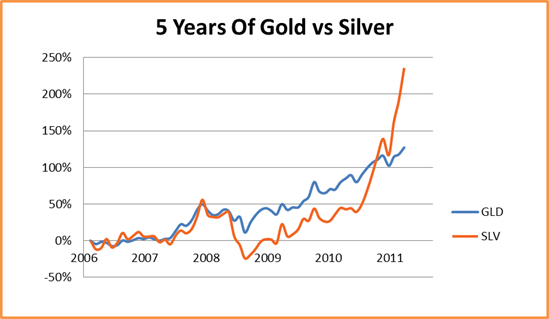Reply to comment
Bubble Second Waves
Investment bubbles usually begin with a grain of truth and end with absurd assumptions.
In a little over a decade, we’ve had two large-scale, known bubbles. Of course, there were also mini-bubbles ranging from fads like Beanie Babies to alternative energy stocks, but the real super bubbles were in tech stocks and real estate.
The reality of the 90s was that technology stocks grew stupendously, and true change occurred as the U.S. led this most important growth area. After a few years of growth in both earnings and stocks, however, reality took a back seat to unrealistic assumptions about the future.
When bubbles mature, investors begin considering even more speculative areas with supposedly more upside, believing "all the money has been made" in the things that have already taken off. This second wave takes what was learned in the bubble, and applies it to an investment with questionable upside, often jolting the price even faster and higher than the original bubble.
During the tech stock bubble, that second wave hit Internet stocks. Following huge gains in large, real tech businesses like Microsoft, Dell, and Cisco, crazed speculation took over, and suddenly, any tiny, unproven tech idea had meaningful upside potential – certainly more than the established players. Hence, the dot com bubble, which, in total dollars, was actually quite small in comparison to the overvaluation in larger-cap tech and telecom companies. Still, this was where the most absurd valuations took place, along with those signs of the times, the "Anything.com" IPOs.
The dot com bubble was also the sign the end was near. There was nothing left to inflate. The last money was in the building. Time for a fire.
Real estate prices began rising much faster than historical growth rates in the 2000s. Although a growth rate slightly higher than inflation was the norm, suddenly, yearly double-digit gains were expected, with limited-to-no downside, of course.
Life on the D-List
Toward the end of the great real estate bubble, B, C, and D list property began climbing in price faster than traditionally more desirable properties. I remember a flyer sent out by a well-known broker in NYC that claimed 50-100% gains in many Outer Boroughs and other non-prime areas in NYC. Time frame for such gains? 1 year – naturally.
Lower-grade real estate investments allowed latecomers to join the bubble with less money – and seemingly tons of upside. Willing banks only added fuel to the fire by lending money to seemingly anyone with a pulse.
We’ve seen some mini-bubbles in commodities, select emerging markets, and the like in recent years, but one bubble stands tall: gold. With 10 calendar years of straight gains behind it, for many investors, the real question on gold is how much higher it can go. Few believe a 50% correction is possible, but then almost nobody, including experts, mortgage lenders, and investors, thought real estate could decline nationally for a year. Yet we’re now working on our sixth calendar year drop in a row in national real estate prices.
But the great gold bull market has slowed somewhat. Taking the lead is the formerly $3 per ounce not-so-precious metal – silver. Silver tips the scales at more than $40 an ounce these days. Of course, when the dollar collapses, inflation takes off, the U.S. government defaults on its debt, etc., etc., silver will be $500 an ounce, and it won’t matter that silver mines can get the stuff out of the ground for less than $10 an ounce now – those "fundamentals" will change. Silver is buying a piece of the future. So was Pets.com.
While it's ironic but oddly predictable that the latest mass speculation is the exact opposite of a New Economy, earning-less, dot com stock (it’s a very Old Economy, earning-less, shiny metal from the ground,) the end result should be the same.
More surprising is that real estate, the last broke speculation, offers investors many of the "benefits" of non-income producing silver: protection from inflation and rampant dollar printing, and in some cases, protection from a falling U.S. dollar. All this in a nice package that keeps the rain out and lets you borrow at low, tax-deductible fixed rates, further increasing your returns when much-feared inflation strikes. And real estate has a much better long-term return, even with this recent crash, than gold and silver, which tend to only look good after big runs up.
There are many other signs the end is nigh for precious metals – news that Utah is accepting U.S. gold and silver coins in commerce, (although this is more symbolic in nature, since the face value is a fraction of the magic gold value,) rampant gold and silver ads on TV, and The University of Texas Investment Management Company moving a billion dollars of their portfolio (or about 5%) into gold bars. And it seems like just yesterday that other endowments lost a ton on real estate.
Perhaps this bubble, too, has farther to go. Precious metals don’t have fundamentals (besides mining costs) to weight them down like tech stocks, and unlike real estate, easy financing isn’t required. There's certainly more money out there that can join the late hours of this party. Maybe it’s just 1998 for the Nasdaq. Maybe this non-income producing asset won’t tank until investors can safely earn 3-5% in CDs and money markets again. But then, stocks and the economy may have some issues with that future as well.

